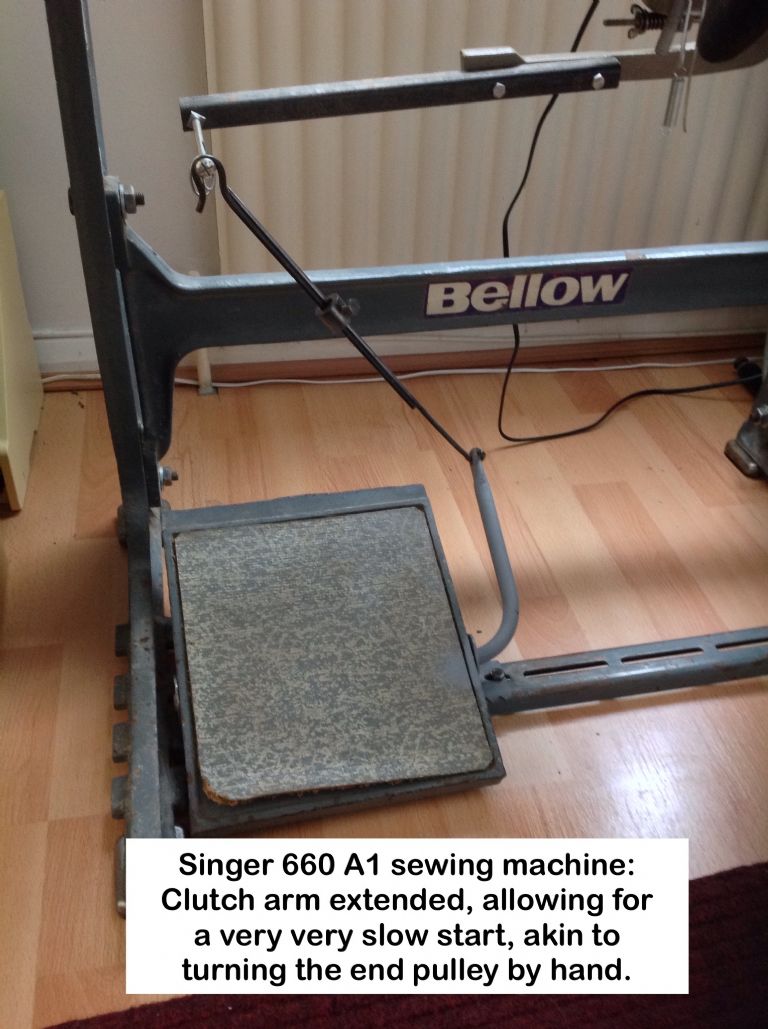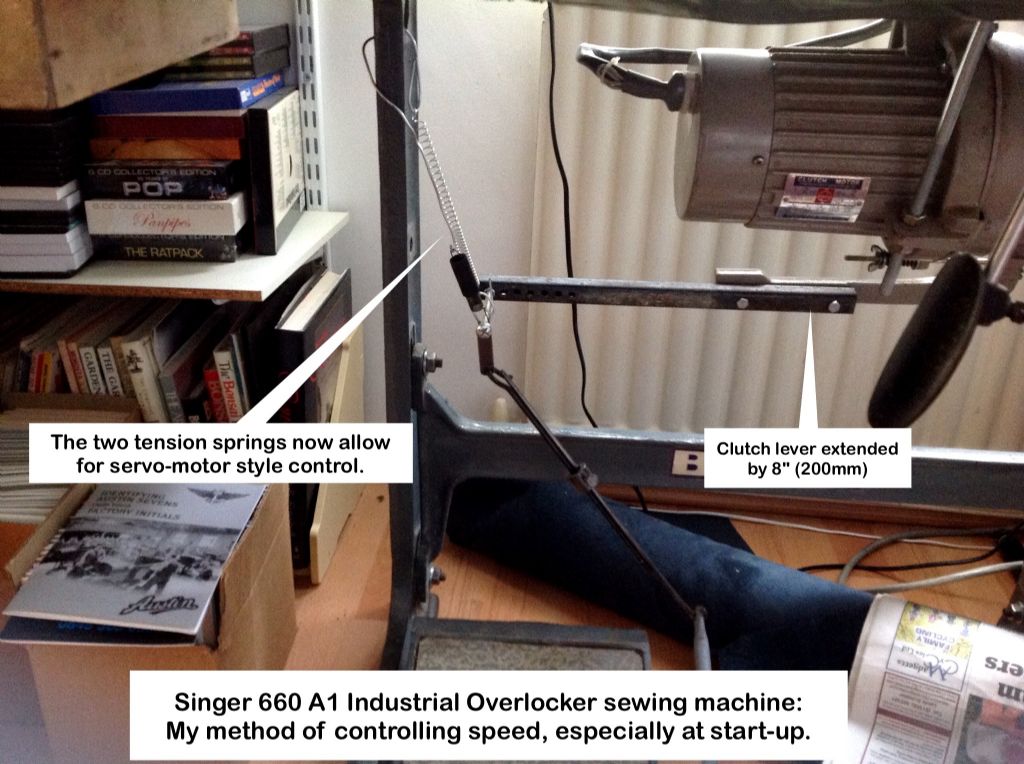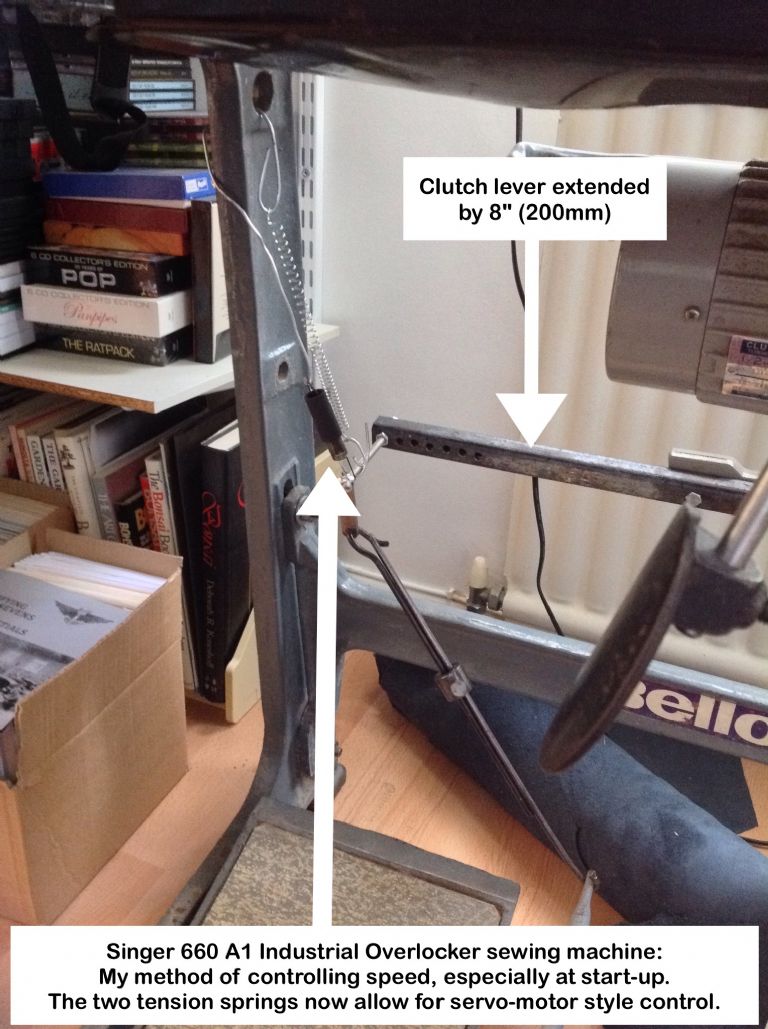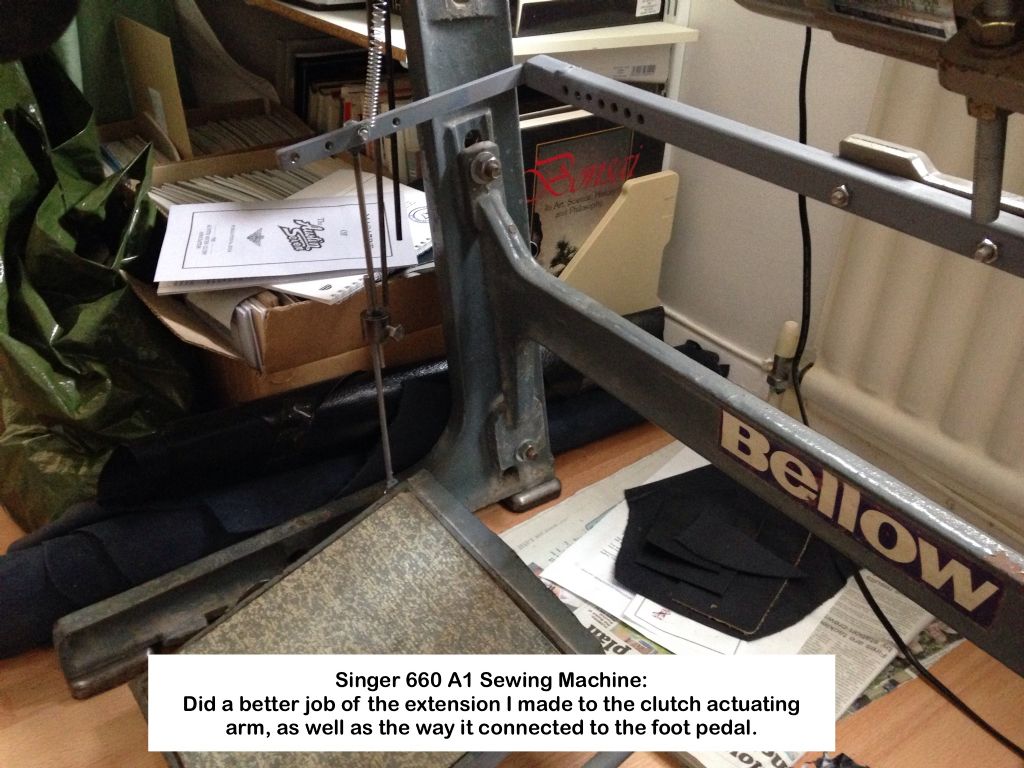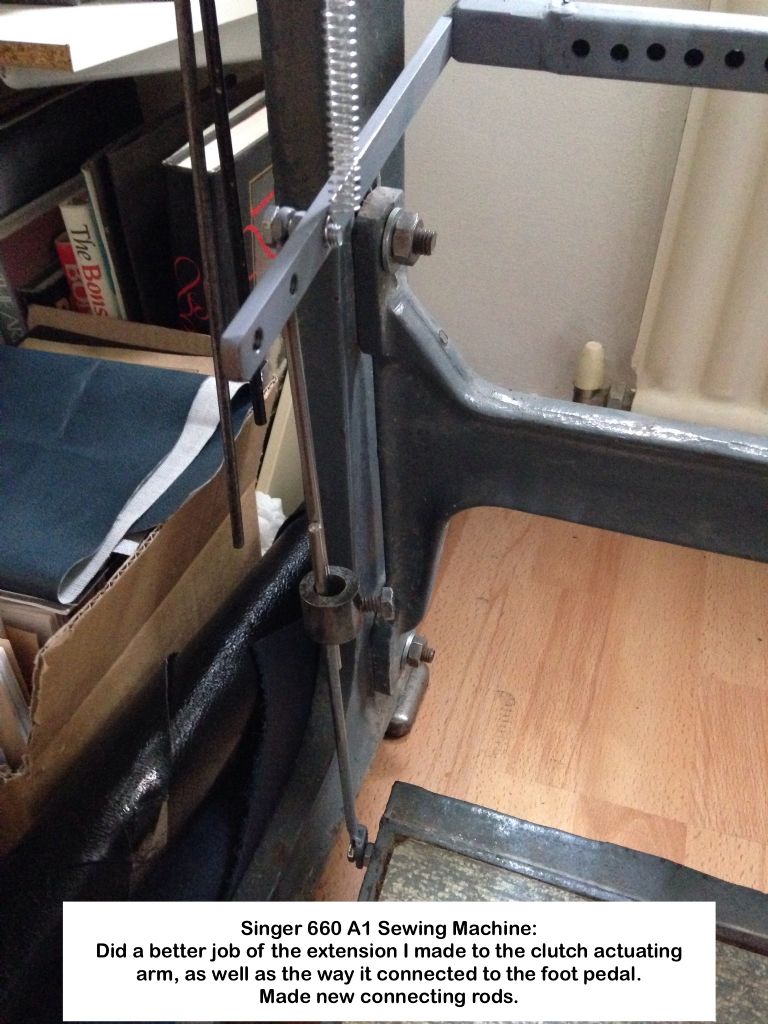Hi Geoff
Adjusting your sewing machine tension, and most other plain sewing machines.
Great work you are getting the hang of it, I noticed in your pocket mending video that there was a bit of a tangle on the bottom and that you did not hold the thread when you started sewing. While it is not absolutely necessary to hold the thread ends when starting it reduces the chance of a tangle underneath. Oh and when turning to continue sewing use the hand wheel to set the needle down in the work this gives you something to pivot on. Also do not sew over the loose ends in particular the bottom thread, it can get dragged down into the hook causing a tangle, I think that happened in your video,
You mentioned that only in one place did the red thread come up to the top, that indicates that the top tension is a little light or the bottom tension is tight. The ideal tension is when the top tension and the bottom tension are equal, this will cause the top and bottom threads to link into each other in the middle of the fabric or leather, you should be able to see a row of red dots on the top (The bottom threads showing on the top) and the other colour If you are using two colours showing on the bottom. (The top threads showing on the bottom). It is a good idea to use two colours when setting up the machine, it makes the tension adjustments more easily seen. For most actual work you use the same colour top and bottom.
While it is possible to use two different threads it will play havoc with your tension settings. use exactly the same type of for the needle and bobbin. (The top and bottom threads)
One little test worth trying is to fill a bobbin with thread, then insert it in the bobbin case (Through the flat tension spring on the bobbin case as well) then try suspending it by the thread alone. It should not fall unless you jiggle the thread. Yes it is hanging by a thread! if it does tighten the small screw that sets the spring tension. A fraction of a turn makes a big difference here. There are two screws it is the bigger one.
Then try pulling the thread from the bobbin case, it should feel smooth without undue tension, it is very hard to describe this as it varies depending on the type of thread you are using, certainly it will be no strain for your little finger. If the tension is too light the bobbin can over spin when you stop sewing, a good way to get a tangle on the bottom. If it is over tight you will not be able to equalise the tension with the tip thread.
The top needle thread is controlled by threading it through various eyes and two mechanisms, the tension disk's and the tension spring.
The tension disk's have a similar function to the flat spring on the bobbin case they are used to match the tension top and bottom.
If the thread quality and the machine were perfect machine these would be all that is needed. However the world is not perfect and the small tension spring that flips up and down around the tension disk's is there to compensate for small variations in tension caused by flaws in the thread and also to help the thread pull back up from when it goes down with the needle and a loop is pulled off the needle by the hook and base that transfers the loop around the bobbin case forming a stitch. The spring gives the thread a little tug at the right time to help it release from the hook and allow it to be pulled up again by the mechanism.
Normally the tension on the this small spring is quite light, If you switch to a heavy thread and thick needle for leather you may have to increase it a bit. At this stage leave it alone,
Having set the bottom tension you should be able to adjust the tension disk's alone until you get a regular and even stitch pattern. too tight and the bottom thread will show more on top, too low and there will be top thread showing more on the bottom.
I hope this is not too confusing!
Regards
John
Edited By John McNamara on 27/06/2016 16:23:18
Edited By John McNamara on 27/06/2016 16:24:10
John McNamara.


